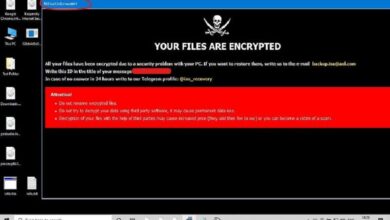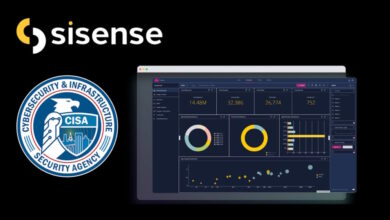
The Rise of Kerberoasting A New Cyber Threat
The rise of kerberoasting a new cyber threat on the horizon – The rise of Kerberoasting, a new cyber threat on the horizon, is chillingly efficient. This attack leverages weaknesses in the Kerberos authentication protocol, a system designed to secure network communications. Imagine a stealthy attacker silently cracking service account passwords, gaining access to sensitive data without ever directly targeting user accounts. That’s the power – and the danger – of Kerberoasting.
This post dives deep into this evolving threat, exploring its mechanics, vulnerabilities, and most importantly, how to protect yourself.
We’ll unpack the technical details of how Kerberoasting works, showing you exactly how attackers exploit vulnerabilities in service account passwords. We’ll then explore the various methods used to identify vulnerable systems, from detecting weak passwords to implementing robust security measures. We’ll also cover mitigation strategies, from strengthening passwords to leveraging multi-factor authentication (MFA), and delve into the crucial role of monitoring and detection systems to identify and respond to attacks in real-time.
Finally, we’ll look towards the future, considering the potential advancements in Kerberoasting techniques and the ongoing arms race between attackers and defenders.
Understanding Kerberoasting
Kerberoasting is a serious cybersecurity threat that leverages weaknesses in the Kerberos authentication protocol. While Kerberos is designed to provide strong authentication, its reliance on weak, easily-guessable passwords for service accounts creates an exploitable vulnerability. This attack allows attackers to obtain the service account’s cryptographic keys, granting them access to sensitive resources and potentially compromising the entire network. Understanding the mechanics of Kerberoasting is crucial for effective security posture.Kerberos Authentication and its VulnerabilitiesKerberos is a network authentication protocol that works by using tickets to verify the identity of users and services.
The process involves a ticket-granting service (TGS) that issues tickets based on user credentials. The vulnerability lies in the fact that service accounts often have weak or default passwords. These passwords, while not directly accessible to attackers, can be targeted through Kerberoasting. The attacker doesn’t need to crack the password directly; they only need to obtain the service account’s Ticket Granting Ticket (TGT), which is encrypted with the service account’s password.
They can then crack this encryption offline, without causing any immediate network alerts.Kerberoasting Attack MechanicsA Kerberoasting attack involves an attacker requesting a service ticket for a specific service account. This request is made using the attacker’s own credentials, which are legitimate and authenticated within the network. The response includes a ticket encrypted with the target service account’s password.
The attacker then takes this encrypted ticket offline and uses brute-force or dictionary attacks to crack the password. Once the password is obtained, the attacker can impersonate the service account and access its associated resources. The key is that this entire process happens offline, minimizing the chances of detection during the password cracking phase.Step-by-Step Kerberoasting Execution
1. Target Identification
The attacker identifies service accounts with potentially weak passwords. This often involves reconnaissance to discover services running on the network.
2. Ticket Request
The attacker uses their legitimate network credentials to request a service ticket for the targeted service account from the Kerberos Key Distribution Center (KDC).
3. Ticket Extraction
The attacker extracts the service ticket, which is encrypted with the target service account’s password hash.
4. Offline Cracking
The attacker takes the encrypted ticket offline and uses password-cracking tools (like Hashcat or John the Ripper) to attempt to decrypt it using brute-force or dictionary attacks. This phase often involves trying common passwords, variations of default passwords, and password lists compiled from various data breaches.
5. Access Exploitation
Once the password is cracked, the attacker can use the service account’s credentials to access the resources and services associated with that account.Common Kerberoasting TargetsCommon targets for Kerberoasting attacks are service accounts with weak passwords that control sensitive resources such as databases, file servers, and domain controllers. These accounts often have privileged access, making them highly valuable targets.
For example, a database service account with a default password or a poorly chosen password is a prime candidate. Another common target might be a service account used for scheduled tasks or automated processes. Attackers often focus on accounts that have broad network access or access to sensitive data. The risk increases significantly when these accounts use passwords that are easily guessable or reused across multiple systems.
Identifying Vulnerable Systems

Kerberoasting exploits weak service account passwords. Understanding which systems are vulnerable and how to detect these weaknesses is crucial for effective defense. This section will Artikel the characteristics of susceptible systems, methods for identifying weak passwords, and crucial security measures to mitigate this threat. We’ll also walk through a hypothetical scenario illustrating a successful Kerberoasting attack.Identifying susceptible systems involves understanding how Kerberoasting works.
The attack leverages the Kerberos protocol’s ability to obtain service tickets, even with a weak password. The attacker doesn’t need to crack the password directly; instead, they request a ticket-granting ticket (TGT) for a service account and then repeatedly attempt to obtain a service ticket using the service account’s password hash. If the password hash is weak, this process is relatively quick, revealing the vulnerability.
Characteristics of Vulnerable Systems
Systems with service accounts possessing weak or easily guessable passwords are the primary targets. This includes systems where password policies are lax, default credentials are used, or passwords haven’t been updated in a long time. Older systems with outdated security patches might also be vulnerable due to known Kerberos protocol weaknesses. Finally, systems with excessive numbers of service accounts increase the attack surface, making identification of weak passwords more difficult, but also increasing the likelihood of finding one.
Detecting Weak Service Account Passwords
Several methods can help detect weak service account passwords. Regular password audits are essential, involving automated tools that scan for weak or easily guessable passwords based on dictionary attacks and common password patterns. Security Information and Event Management (SIEM) systems can be configured to monitor Kerberos authentication attempts and flag unusual activity, such as an excessive number of failed attempts from a single IP address.
Penetration testing, including ethical hacking simulations, can also expose vulnerabilities before malicious actors exploit them. Finally, using tools like `secretsdump` (part of the Mimikatz suite, but use with caution and only in controlled environments) can be used to extract password hashes from memory dumps for analysis. This should only be done with explicit permission within a controlled and monitored environment.
Security Measures to Mitigate Kerberoasting Vulnerabilities
A multi-layered approach is crucial to mitigate Kerberoasting vulnerabilities.
- Strong Password Policies: Enforce strong password policies for all service accounts, including mandatory complexity requirements, regular password changes, and password expiration policies. Avoid using default passwords.
- Least Privilege Principle: Grant service accounts only the necessary permissions to perform their tasks, limiting the potential impact of compromise.
- Regular Security Audits: Conduct regular security audits to identify and address weak passwords and vulnerabilities.
- Multi-Factor Authentication (MFA): Implement MFA for all service accounts to add an extra layer of security.
- Kerberos Configuration Hardening: Configure Kerberos to restrict ticket-granting ticket (TGT) lifetimes and enforce stricter authentication policies.
- Regular Patching: Keep all systems patched with the latest security updates to address known vulnerabilities.
- Monitoring and Alerting: Implement robust monitoring and alerting systems to detect suspicious Kerberos activity.
Hypothetical Kerberoasting Attack Scenario
Imagine a company network with several vulnerable services. An attacker uses a Kerberoasting tool to target these services. The tool attempts to obtain service tickets using the hashed passwords. If a password is weak, the ticket is obtained quickly, revealing the vulnerability.
| Service Name | Service Account | Password Hash | Vulnerability Level |
|---|---|---|---|
| PrintServer | printsvc | 12345678 | High |
| MailServer | mailsvc | Password1! | Medium |
| FileServer | filesvc | DefaultPass | Critical |
| DatabaseServer | dbsvc | ComplexPassword123! | Low |
Mitigation and Prevention Strategies
Kerberoasting exploits weaknesses in the Kerberos authentication protocol, specifically targeting poorly secured service accounts. Effective mitigation requires a multi-layered approach focusing on strengthening password security, implementing robust authentication methods, and enhancing auditing capabilities. Ignoring these preventative measures leaves your organization vulnerable to this increasingly prevalent attack vector.
Strengthening Service Account Passwords
Strong passwords are the first line of defense against Kerberoasting. Simply put, passwords that are difficult to guess or crack through brute-force attacks significantly increase the attacker’s difficulty. This involves implementing password complexity requirements that mandate a minimum length, a mix of uppercase and lowercase letters, numbers, and special characters. Furthermore, regular password rotation, enforced through automated policies, is crucial.
Service accounts should have passwords changed frequently, perhaps every 30 to 90 days, depending on your organization’s risk tolerance and the sensitivity of the data accessed by those accounts. Additionally, consider using a password manager that generates and stores strong, unique passwords for each service account. This simplifies password management while enhancing security. Avoid using easily guessable passwords like “password123” or predictable sequences.
Multi-Factor Authentication (MFA) Implementation Benefits, The rise of kerberoasting a new cyber threat on the horizon
Implementing multi-factor authentication (MFA) adds a significant layer of security beyond just strong passwords. MFA requires users (or service accounts) to provide multiple forms of authentication, such as a password and a one-time code from an authenticator app or a hardware token. Even if an attacker obtains a service account password, they still need access to the second factor to authenticate successfully.
This significantly reduces the risk of successful Kerberoasting attacks, as obtaining a second factor is far more difficult than simply cracking a password. The increased security provided by MFA justifies the slight increase in user inconvenience. The benefits greatly outweigh the costs in terms of reduced risk and potential financial losses from a successful breach.
Password Management Solution Comparison
Several password management solutions exist, each with its strengths and weaknesses. Simple solutions might involve a local password manager on each machine, but this approach lacks centralized control and can be difficult to manage across a large organization. Enterprise-grade solutions, however, provide centralized management, automated password rotation, and often integrate with other security tools. A cloud-based password management solution offers scalability and ease of access, but security concerns regarding data storage in the cloud must be carefully considered.
On-premises solutions offer more control over data but require more significant infrastructure investment and management. The choice depends on the organization’s size, budget, and technical expertise. Careful evaluation of features, security, and scalability is crucial before choosing a solution.
Kerberos Auditing and Logging Mechanism Implementation
Comprehensive auditing and logging of Kerberos activities are essential for detecting and responding to potential Kerberoasting attempts. This involves configuring Kerberos to log all authentication attempts, including successful and failed logins. These logs should be centrally collected and monitored for suspicious activity, such as repeated failed login attempts from unusual IP addresses or unusual access times. Security Information and Event Management (SIEM) systems can help automate the analysis of these logs, identifying potential threats in real-time.
Effective analysis of Kerberos logs allows for prompt detection of suspicious activities, enabling swift responses to mitigate potential breaches and improve overall security posture. Regular review and analysis of these logs are crucial for identifying trends and adjusting security policies accordingly.
Detecting Kerberoasting Attacks
Kerberoasting, a stealthy attack leveraging weaknesses in the Kerberos authentication protocol, requires proactive detection strategies. Successfully identifying these attacks hinges on understanding the subtle indicators they leave behind and implementing robust monitoring mechanisms. Early detection is crucial to minimize damage and prevent escalation.Identifying compromised accounts and systems before attackers can exploit them is paramount. Effective detection involves monitoring for suspicious Kerberos ticket requests, analyzing network traffic for unusual patterns, and establishing a system for flagging anomalous Kerberos activity.
Indicators of Compromise (IOCs) Associated with Kerberoasting Attacks
Successful Kerberoasting attacks often leave behind subtle clues. These indicators, while not definitive on their own, collectively point towards malicious activity. A comprehensive security monitoring strategy should consider a combination of these indicators to increase detection accuracy. For instance, a large number of failed login attempts from a single IP address targeting multiple accounts, especially during off-peak hours, could be a significant red flag.
Similarly, an unusual spike in Kerberos ticket requests for specific service accounts should raise immediate concerns. Finally, the presence of suspicious tools or processes on compromised systems that could facilitate Kerberoasting, like custom scripts or readily available tools, could indicate a successful attack.
Methods for Monitoring Kerberos Ticket Requests
Monitoring Kerberos ticket requests is essential for detecting Kerberoasting attempts. This involves actively tracking the frequency, source, and destination of these requests. Security Information and Event Management (SIEM) systems can be configured to monitor Kerberos events, alerting administrators to unusual activity. For example, SIEM tools can generate alerts when a significant number of ticket requests are made for a particular service account within a short timeframe, or if requests originate from unusual locations or IP addresses.
Additionally, regular audits of service account passwords are crucial. Changes to these passwords are indicative of potential compromise, and should be immediately investigated.
Network Traffic Patterns Indicative of Kerberoasting
Analyzing network traffic can reveal patterns consistent with Kerberoasting attacks. A key indicator is a high volume of Kerberos authentication requests targeting specific service accounts, especially those with weak passwords. These requests might appear legitimate at first glance, but a closer examination might reveal unusual timing or source IP addresses. Another pattern to watch for is the presence of encrypted traffic destined for domain controllers during off-peak hours.
Such traffic, while not inherently malicious, could indicate an attacker attempting to crack passwords offline. Moreover, the use of anonymizing tools or proxies to mask the attacker’s location adds to the suspicion.
Designing a System for Detecting Anomalous Kerberos Activity
Building a robust system for detecting anomalous Kerberos activity requires a multi-layered approach. This involves establishing baselines for normal Kerberos activity, then using machine learning algorithms to identify deviations from these baselines. Anomaly detection systems can be trained on historical Kerberos event data to learn normal patterns and flag any significant departures. This allows for the identification of unusual patterns that might otherwise go unnoticed.
For example, a sudden increase in the number of Kerberos ticket requests from a specific user account, coupled with attempts to access sensitive resources, could trigger an alert. The system should also integrate with other security tools, such as SIEM systems and intrusion detection systems, to provide a comprehensive view of security events.
The Future of Kerberoasting

Kerberoasting, while currently a significant threat, is not a static attack vector. Its evolution is driven by both attacker ingenuity and the ongoing advancements in network security. Understanding these evolving trends is crucial for effective defense strategies. We’ll explore the potential future directions of Kerberoasting, the challenges it presents, and the role of AI in both its perpetration and mitigation.
Advanced Kerberoasting Techniques
Future Kerberoasting attacks will likely incorporate more sophisticated techniques to evade detection and improve efficiency. This could involve the use of more advanced credential-harvesting tools that leverage machine learning to identify and target high-value accounts. Attackers may also explore methods to automate the process, scaling their attacks across larger networks with greater speed and stealth. Furthermore, integration with other attack vectors, such as phishing or exploiting vulnerabilities in service accounts, will likely become more prevalent, creating a more complex threat landscape.
For instance, attackers might combine kerberoasting with pass-the-hash techniques to further compromise systems after obtaining service account credentials.
Seriously, the rise of Kerberoasting as a cyber threat is worrying; it’s exploiting weaknesses we thought were patched. Building secure apps is crucial, and that’s where understanding the advancements in domino app dev the low code and pro code future comes in. Improved app security directly impacts our ability to combat threats like Kerberoasting, so focusing on robust development practices is more important than ever.
Challenges in Defending Against Evolving Kerberoasting Attacks
Defending against the evolving nature of Kerberoasting presents significant challenges. The increasing sophistication of attack techniques requires equally advanced detection and prevention methods. Traditional security measures may prove inadequate against highly automated and stealthy attacks. Furthermore, the sheer volume of potential targets within a large enterprise network makes comprehensive monitoring and protection a complex undertaking. The challenge is compounded by the need to balance security with operational efficiency, avoiding measures that disrupt legitimate user activity.
For example, overly restrictive policies might hinder productivity. The continuous arms race between attackers and defenders necessitates a proactive and adaptive approach to security.
The Role of Artificial Intelligence in Kerberoasting
AI plays a dual role in the Kerberoasting landscape. On the offensive side, AI-powered tools can automate the identification of vulnerable service accounts, optimize attack strategies, and even learn to bypass existing security measures. This could lead to more efficient and targeted attacks, increasing the potential damage. Conversely, AI can be leveraged defensively to enhance threat detection and response.
Machine learning algorithms can be trained to identify anomalous patterns indicative of Kerberoasting attacks, allowing for early detection and mitigation. AI-driven security information and event management (SIEM) systems can analyze vast amounts of security data to identify suspicious activities and prioritize alerts. A well-trained AI system can detect subtle anomalies that might otherwise be missed by human analysts.
Timeline of Significant Kerberoasting Incidents
While specific, publicly disclosed Kerberoasting incidents are relatively rare due to their often-subtle nature and the sensitive information involved, the impact of successful attacks can be significant. Many breaches attributed to other attack vectors might actually involve Kerberoasting as a crucial initial step, making it difficult to isolate specific incidents. For example, a large-scale data breach in a financial institution might be attributed to phishing, while a successful Kerberoasting attack might have been the critical first step in gaining initial access.
The lack of public reporting, however, hinders the creation of a comprehensive timeline of specific Kerberoasting-related incidents. The threat remains significant, even without a detailed public record of individual attacks. The real impact lies in the potential for widespread damage and the difficulty in attribution, making it a critical threat to address proactively.
Case Studies: The Rise Of Kerberoasting A New Cyber Threat On The Horizon
Kerberoasting attacks, while sophisticated, leave a trail. Examining real-world incidents helps us understand the attack lifecycle, the damage inflicted, and effective mitigation strategies. This section will delve into a hypothetical but realistic Kerberoasting scenario, highlighting key phases and the subsequent remediation process. We will also explore successful prevention strategies employed by organizations to safeguard their systems.
A Real-World Kerberoasting Incident Analysis
This case study details a hypothetical Kerberoasting attack against a medium-sized financial institution. The attackers, likely a sophisticated threat actor, exploited vulnerabilities in the organization’s Active Directory environment. The attack resulted in the compromise of several high-value accounts, including those with access to sensitive financial data and customer information.
- Attack Phases: The attackers first performed reconnaissance, identifying vulnerable service accounts with weak passwords. They then used a Kerberoasting tool to request service tickets for these accounts. By offline cracking these tickets, they gained access to the corresponding accounts. Finally, they leveraged these compromised accounts to move laterally within the network, accessing sensitive data and potentially exfiltrating it.
- Impact: The immediate impact included the unauthorized access to sensitive customer data, potentially leading to financial loss through fraud and regulatory fines. The reputational damage caused by a data breach of this nature could also be substantial, leading to a loss of customer trust and potential legal action.
- Remediation Steps: The organization implemented several remediation steps, including strengthening password policies for service accounts, implementing multi-factor authentication (MFA), and deploying intrusion detection and prevention systems (IDPS) to monitor for suspicious Kerberoasting activity. They also conducted a thorough security audit to identify and address other vulnerabilities in their network infrastructure.
Successful Kerberoasting Prevention Strategies
Several organizations have successfully implemented strategies to prevent Kerberoasting attacks. These strategies focus on proactively strengthening the security posture of their Active Directory environments and enhancing their overall security defenses.
- Strong Password Policies: Implementing strong password policies, including password complexity requirements, regular password changes, and password rotation, significantly increases the difficulty of cracking service account passwords.
- Multi-Factor Authentication (MFA): MFA adds an extra layer of security, making it significantly harder for attackers to gain access to accounts even if they obtain the password. This is particularly effective for service accounts.
- Regular Security Audits: Regularly auditing Active Directory for weak passwords and misconfigured services helps identify and address vulnerabilities before they can be exploited by attackers.
- Intrusion Detection and Prevention Systems (IDPS): Deploying IDPS solutions capable of detecting and preventing Kerberoasting attempts is crucial for real-time threat detection and response.
- Least Privilege Access Control: Granting only the necessary permissions to accounts minimizes the potential damage from a successful compromise. Service accounts should have the least privileges required to perform their tasks.
Financial and Reputational Damage
The financial consequences of a successful Kerberoasting attack can be substantial. This includes direct costs associated with incident response, remediation efforts, regulatory fines (like GDPR penalties), and potential legal fees. Beyond the direct costs, reputational damage can lead to lost business, decreased customer loyalty, and difficulties attracting new customers. In the hypothetical case of the financial institution, the potential cost could run into millions of dollars, considering the potential for data breaches, fines, and reputational harm.
For example, a publicized data breach could lead to a significant drop in stock price and loss of investor confidence.
Final Wrap-Up

Kerberoasting is a serious threat, but not insurmountable. By understanding its mechanics, identifying vulnerable systems, and implementing robust mitigation strategies, organizations can significantly reduce their risk. The key takeaway is proactive defense: strengthen service account passwords, embrace MFA, and diligently monitor your network for suspicious Kerberos activity. Staying informed about evolving attack techniques and investing in advanced security solutions are crucial steps in safeguarding your digital assets.
The battle against Kerberoasting is ongoing, but with the right knowledge and proactive measures, we can stay ahead of the curve.
Detailed FAQs
What is the difference between Kerberoasting and Pass-the-Hash?
While both target Kerberos, Kerberoasting focuses on cracking service account passwords offline, whereas Pass-the-Hash involves using stolen NTLM hashes to authenticate. Kerberoasting is more stealthy as it doesn’t directly involve network authentication attempts.
Can Kerberoasting affect personal computers?
While less common, Kerberoasting can target systems within a home network if they’re part of a domain or have exposed service accounts with weak passwords. The impact is generally lower than on enterprise networks, but still a risk.
How long does a Kerberoasting attack typically take?
The time it takes varies depending on the strength of the service account passwords and the attacker’s resources. Weak passwords can be cracked in minutes, while stronger passwords might take hours or days.





